Andrew's Bald
Great Smoky Mountains National Park, North Carolina
Over the summer of 2020 (May 25 - Aug 7), I traveled around the United States, primarily living out of my car in order to see as much of the country's natural beauty as possible. Visiting 15 states, passing through several more, I traveled over 15,000 miles during the trip. I wanted to be able to consolidate all the details of this journey into a thorough guide explaining where I went, who I saw, what trails I hiked, what I ate, how I cooked, how I slept, the good times, the bad times, and all the ins and outs of my life on the road. I also broke down the cost of the trip, and what I did to save money. I want people to be able to use this as a resource to turn their dream of traveling the country into a reality! Thank you so much to Mitchell who was the biggest inspiration for me to commit to doing this, and helped a lot to make it happen.
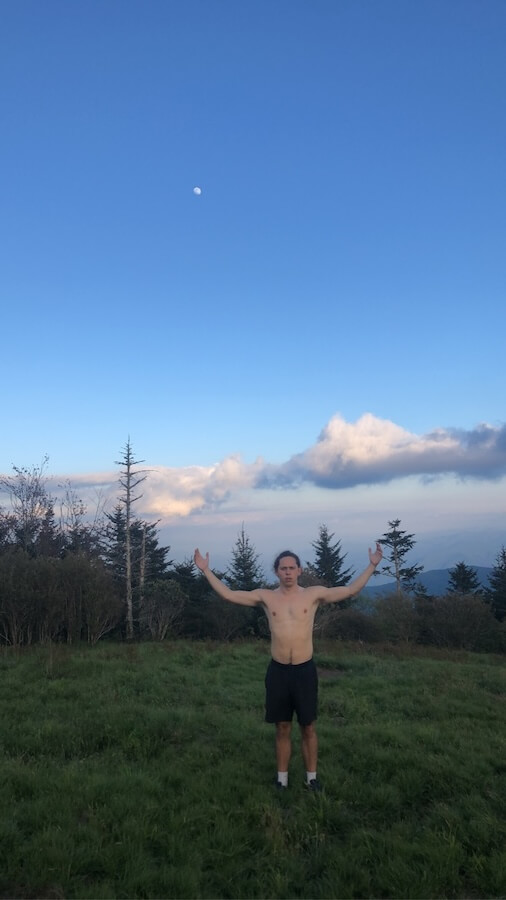
Great Smoky Mountains National Park, North Carolina
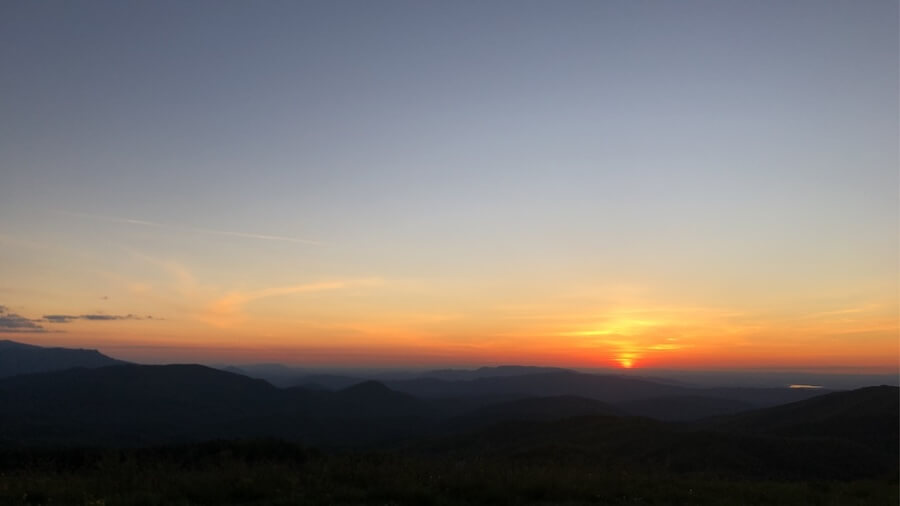
North Carolina
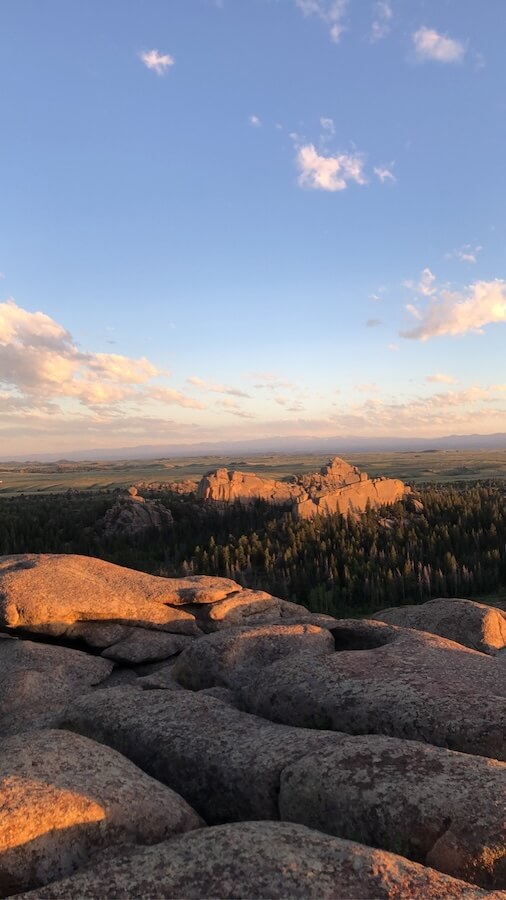
Wyoming
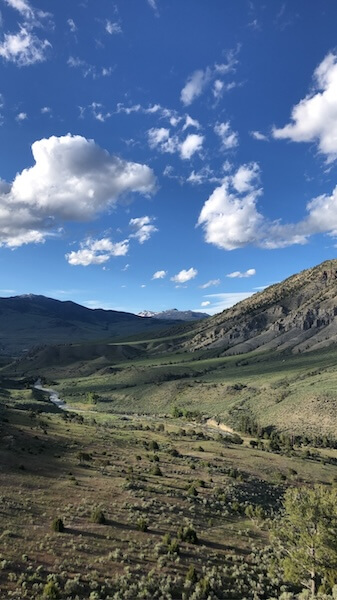
Montana
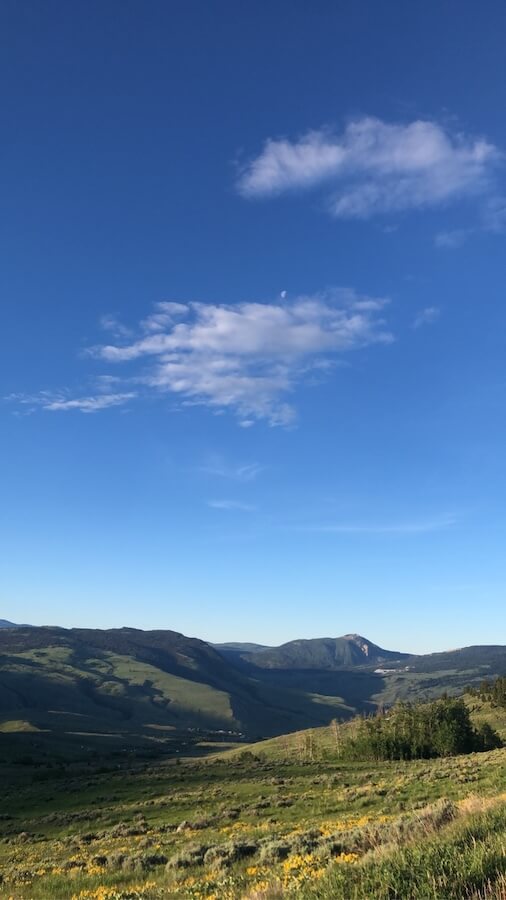
Gardiner, Montana
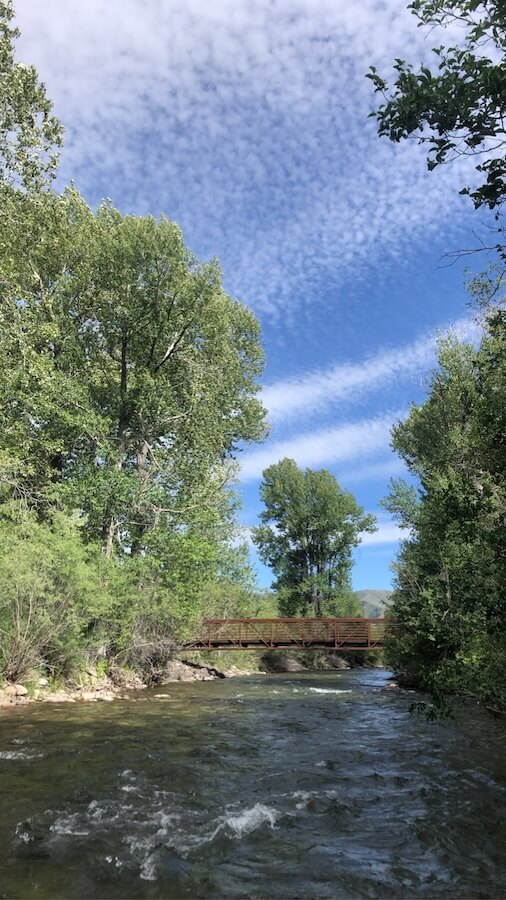
Ketchum, Idaho
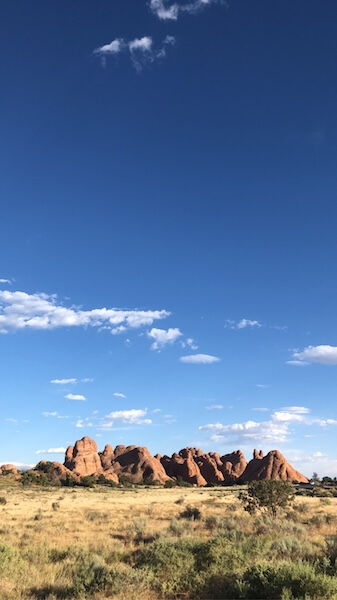
Arches National Park, Utah
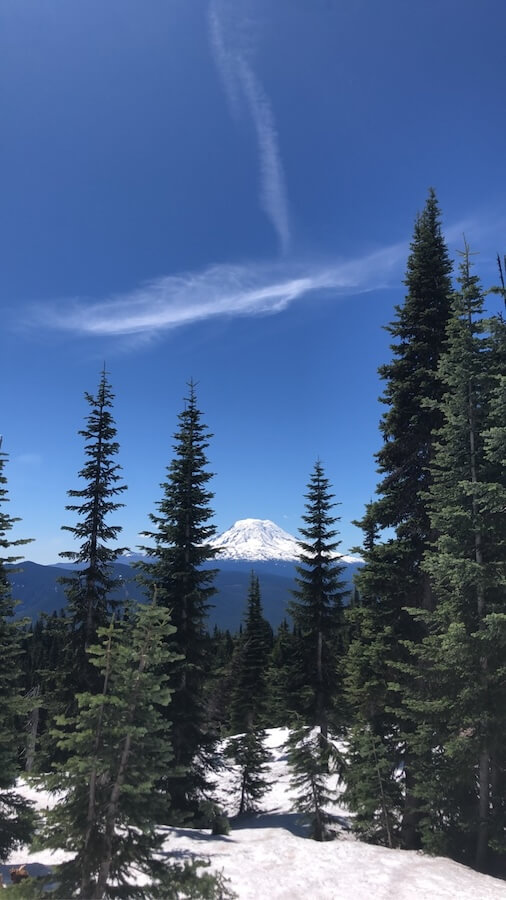
Washington
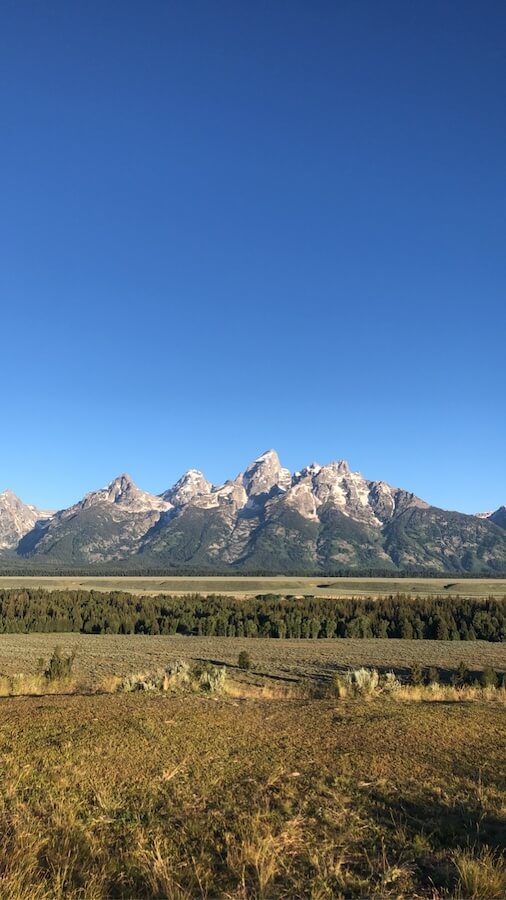
Grand Teton National Park, Wyoming
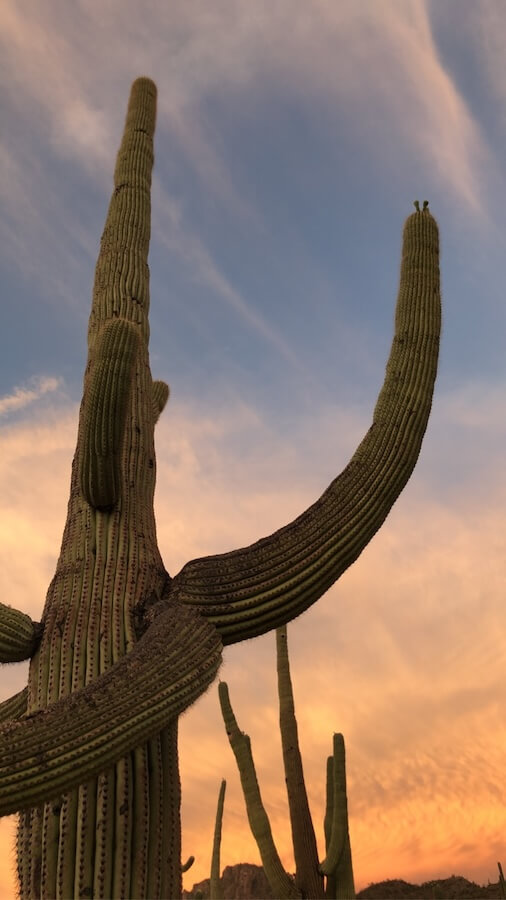
Tuscon, Arizona
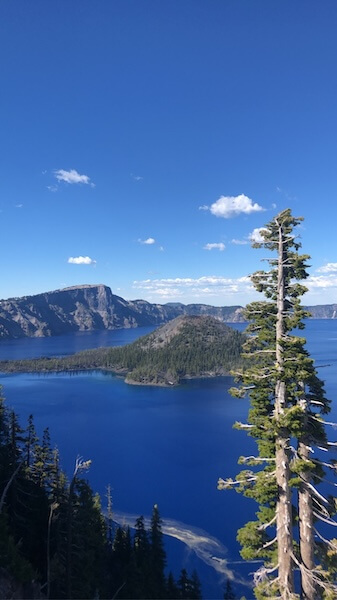
Crater Lake National Park, Oregon
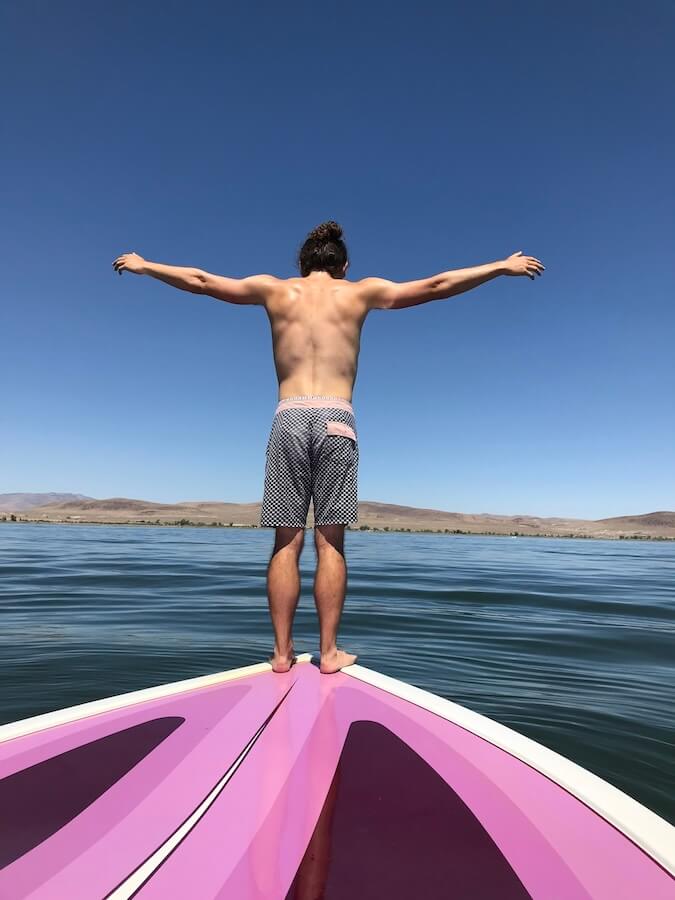
Silver Springs, Nevada

Joshua Tree National Park, California
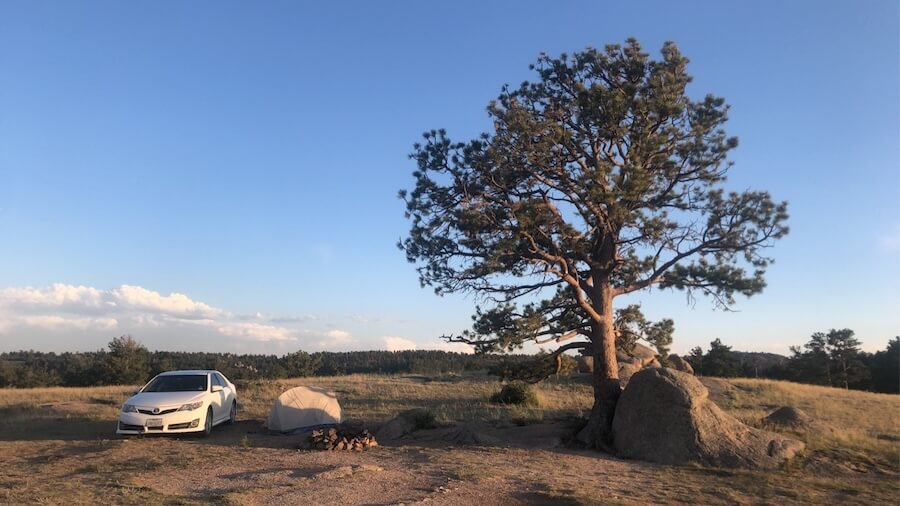
Wyoming
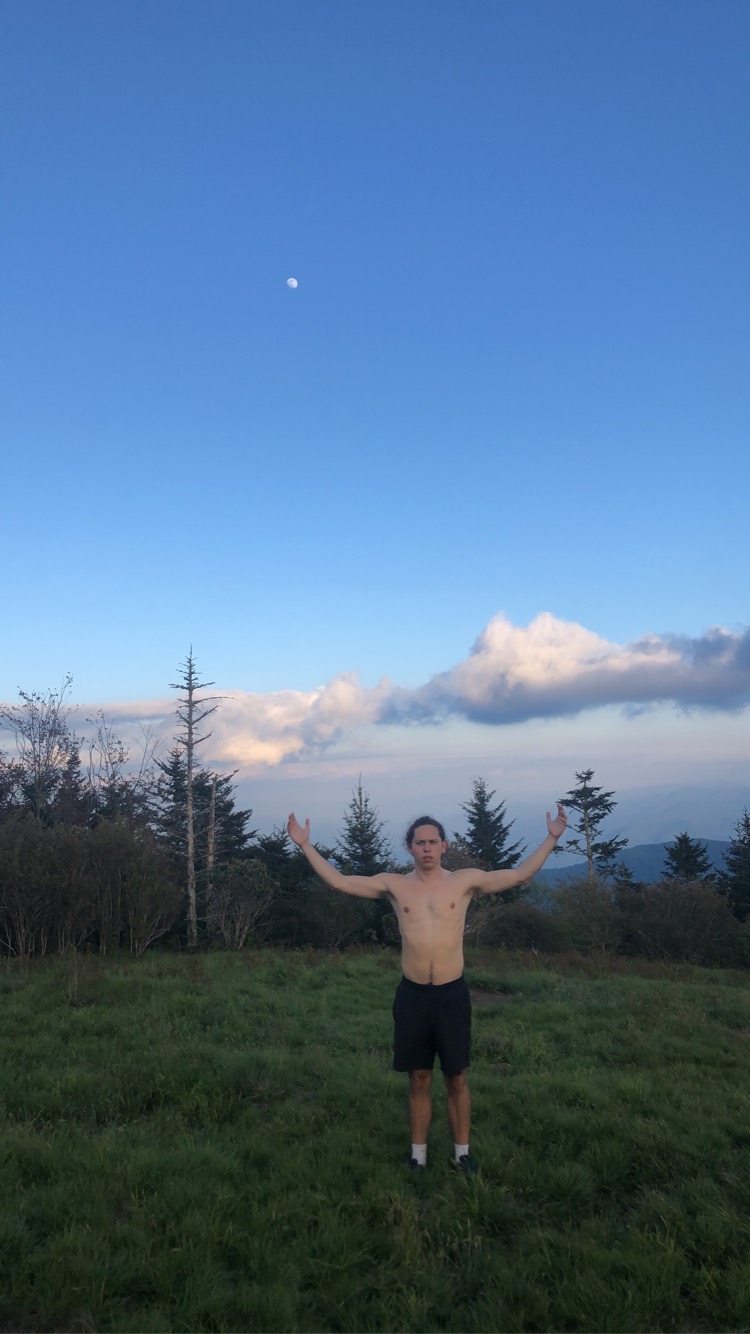
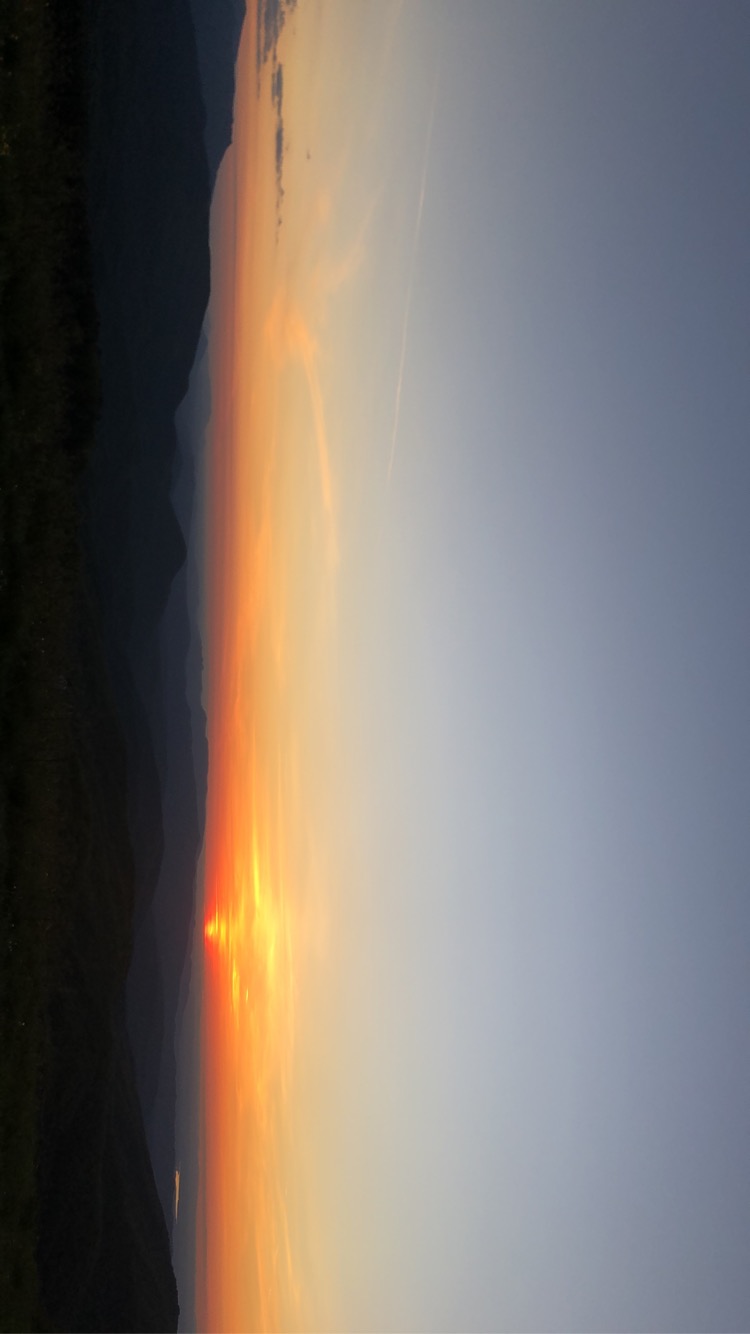
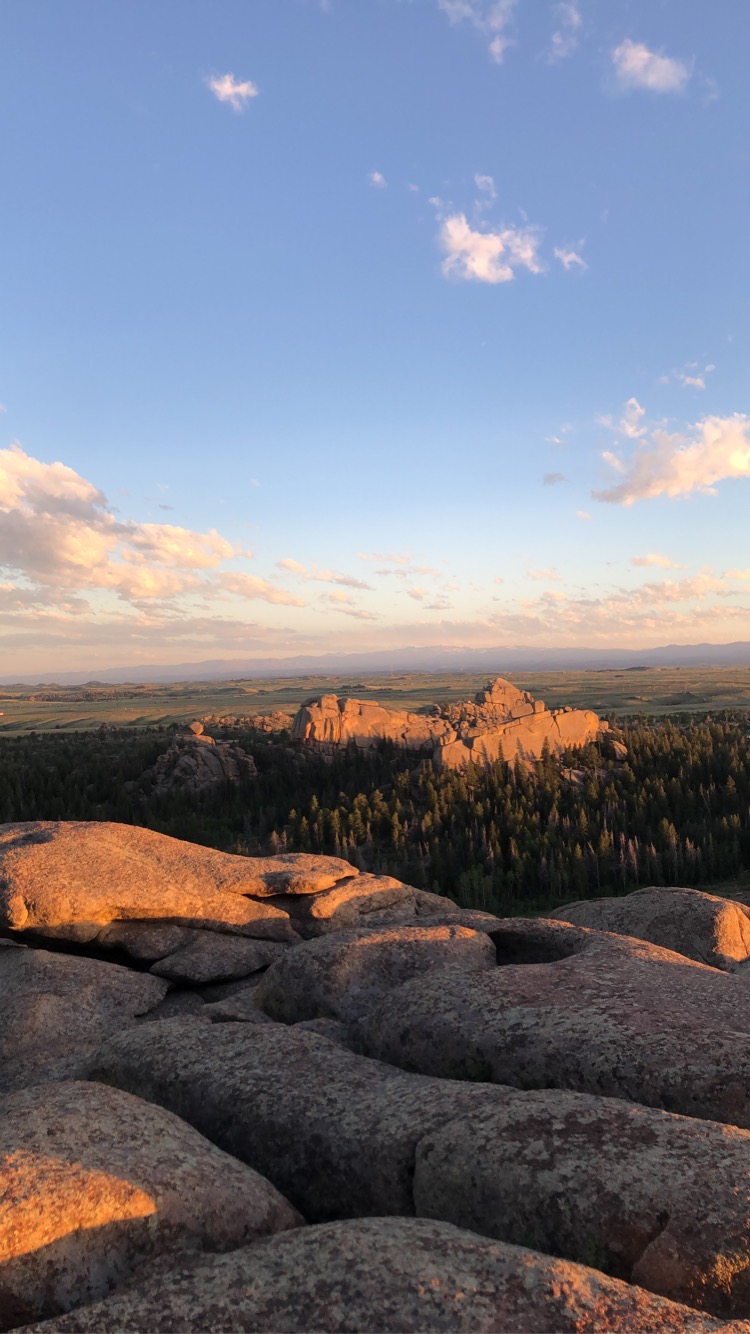

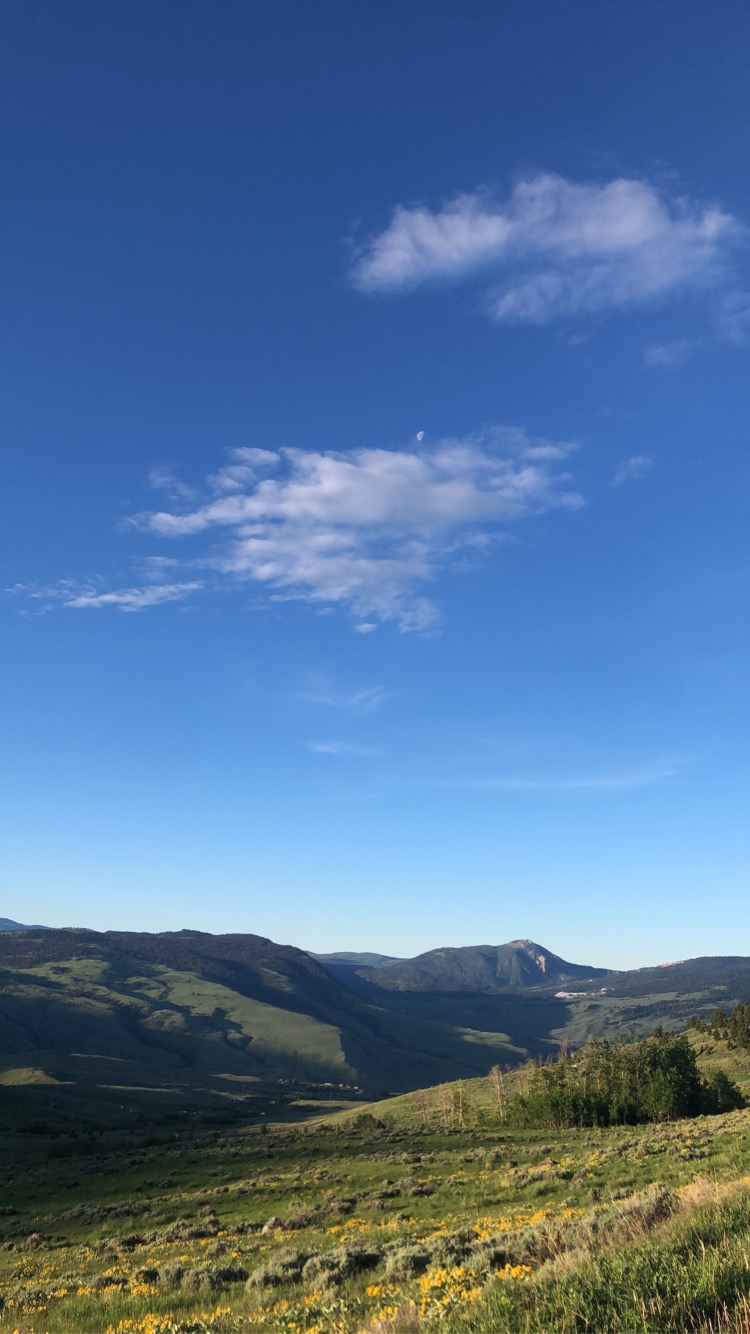
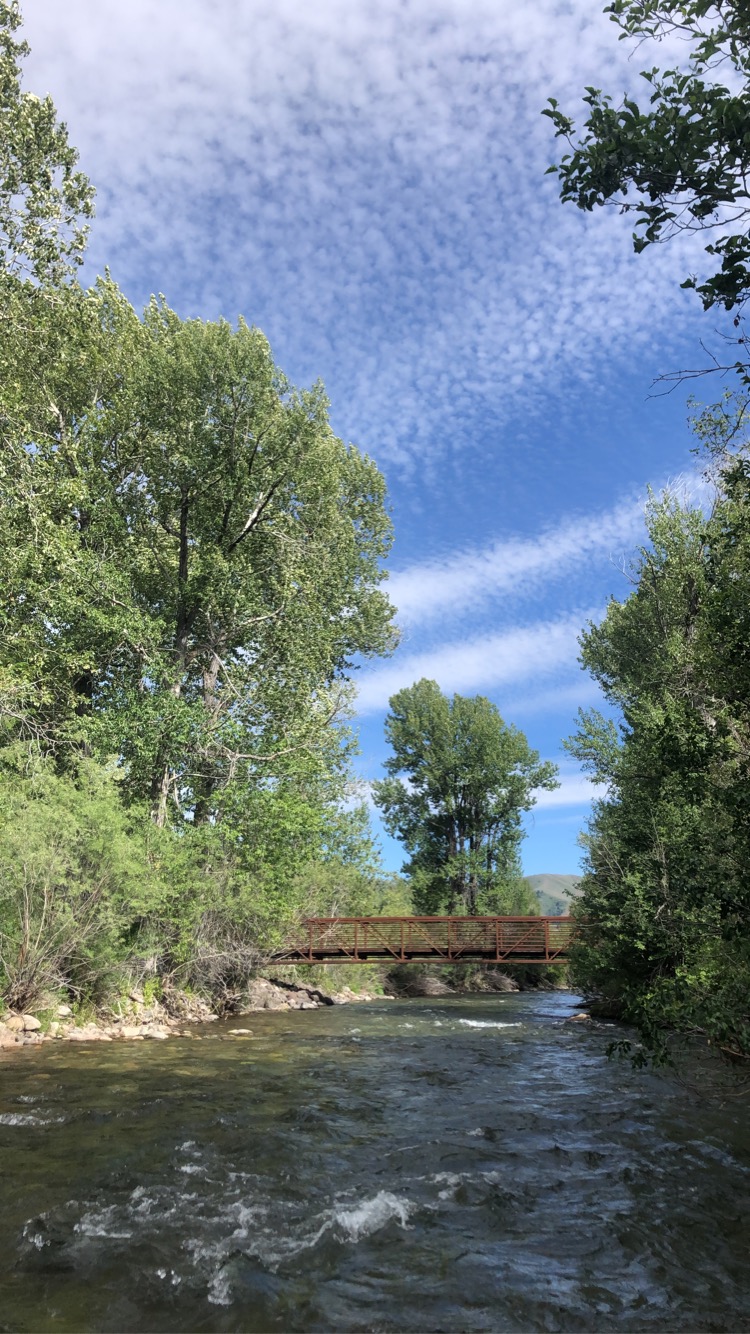
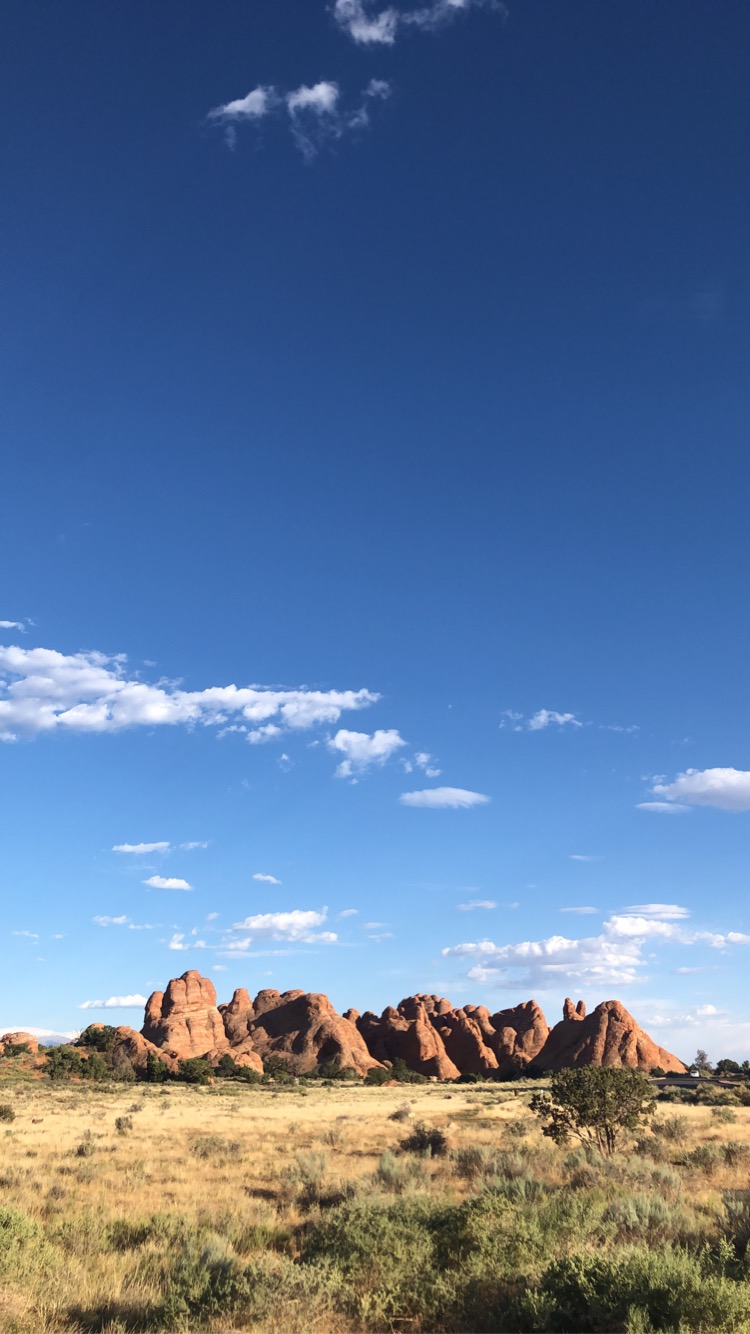
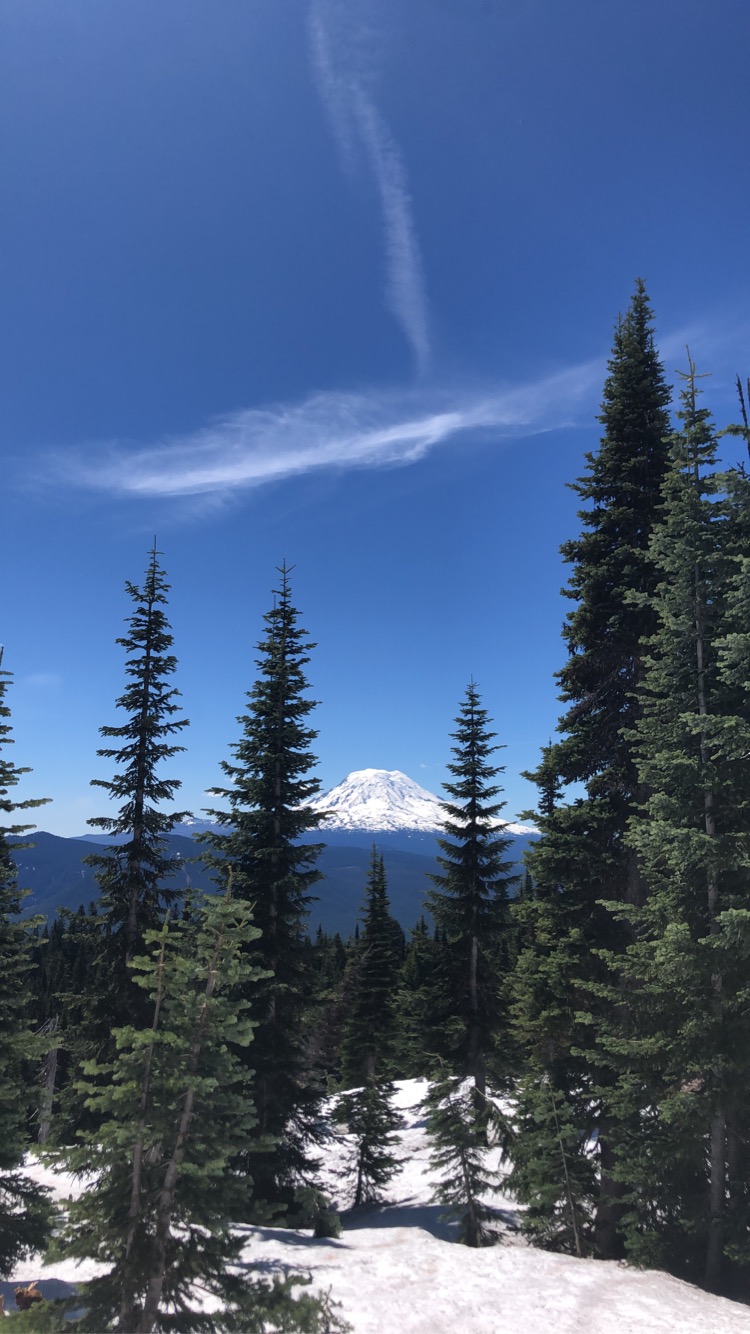
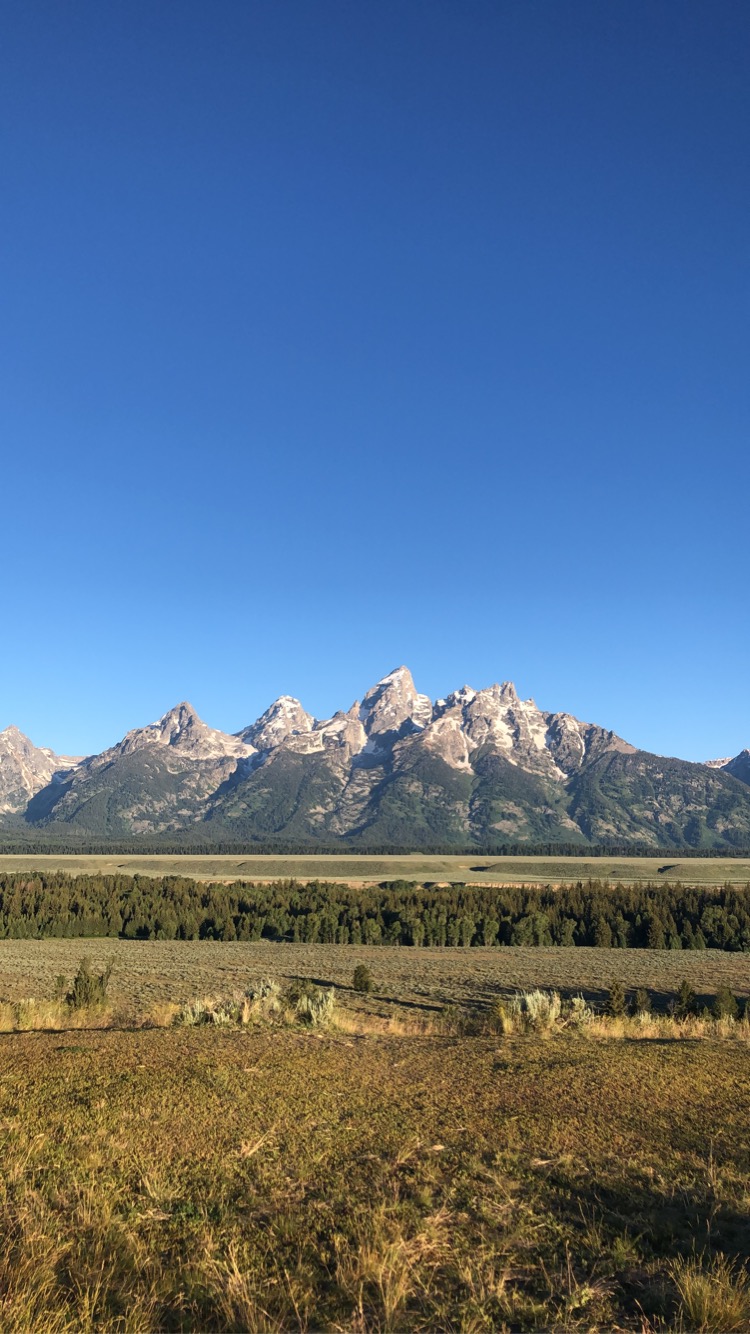
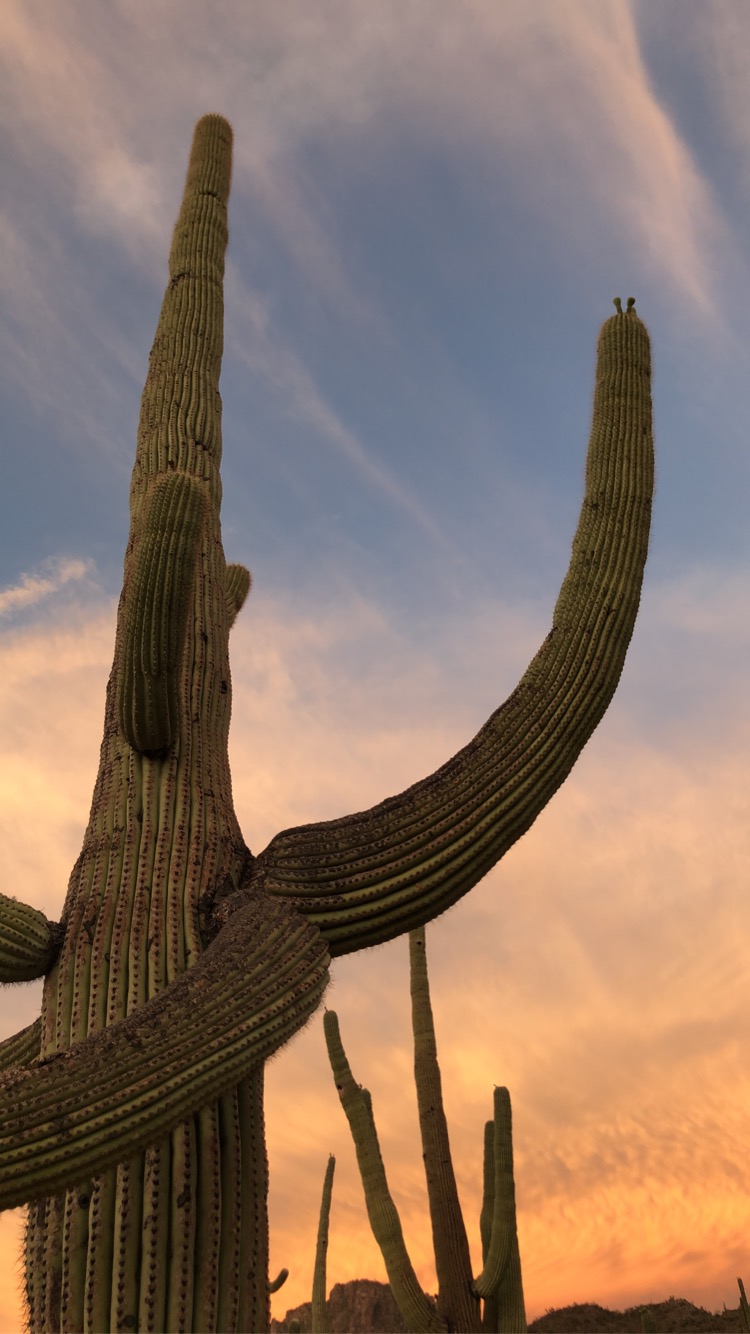
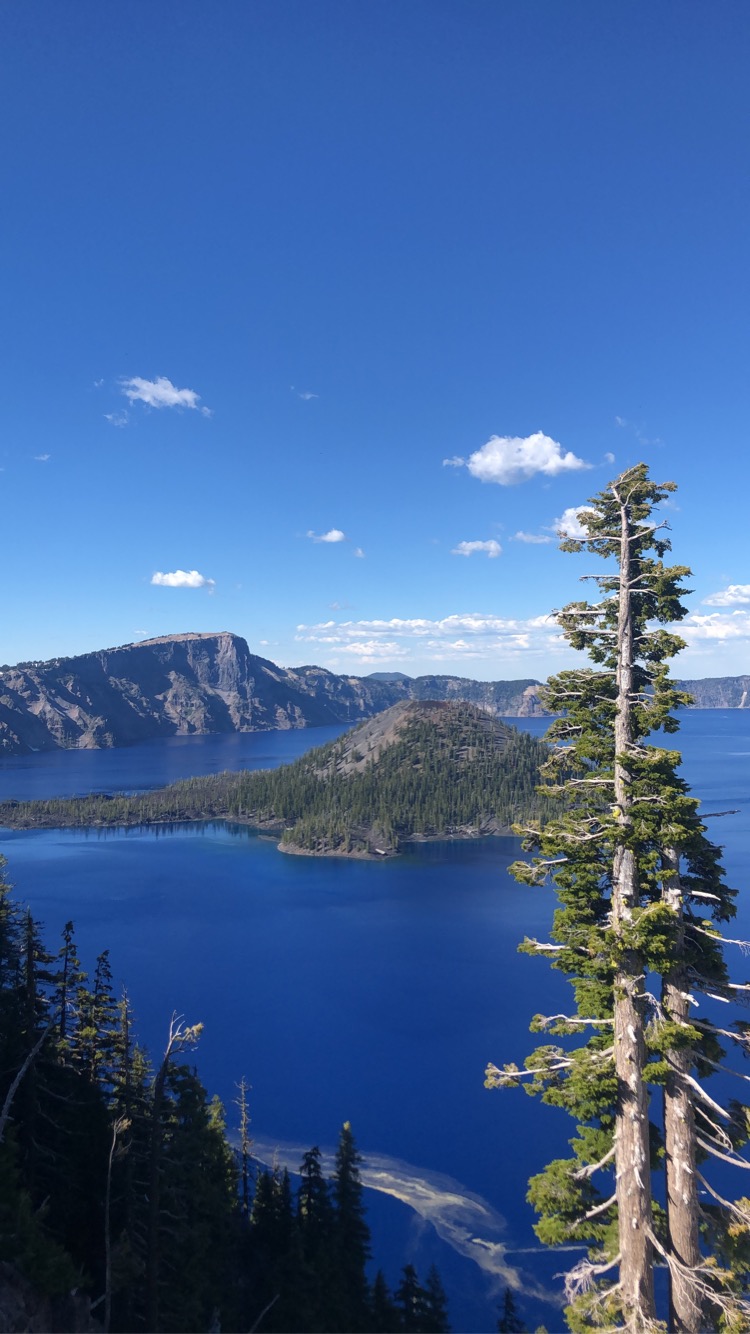
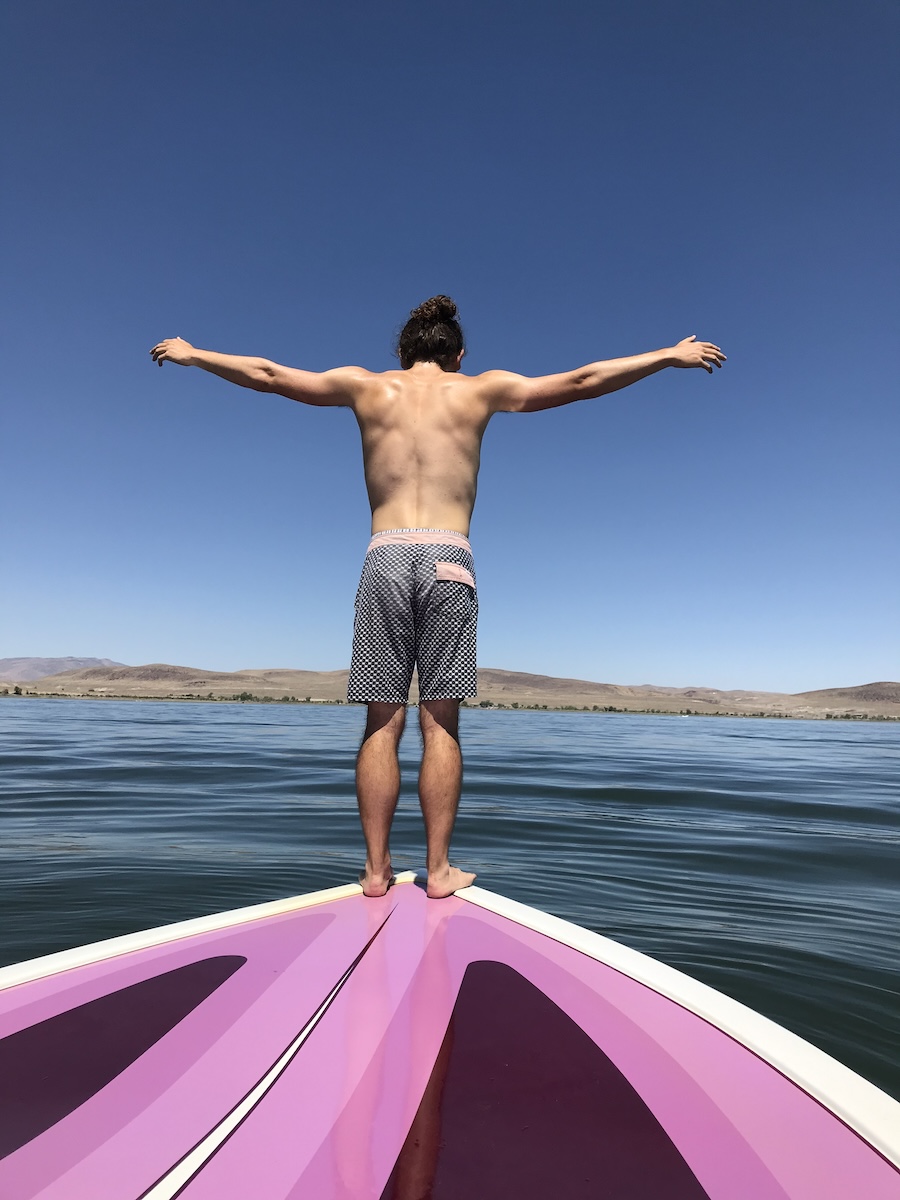
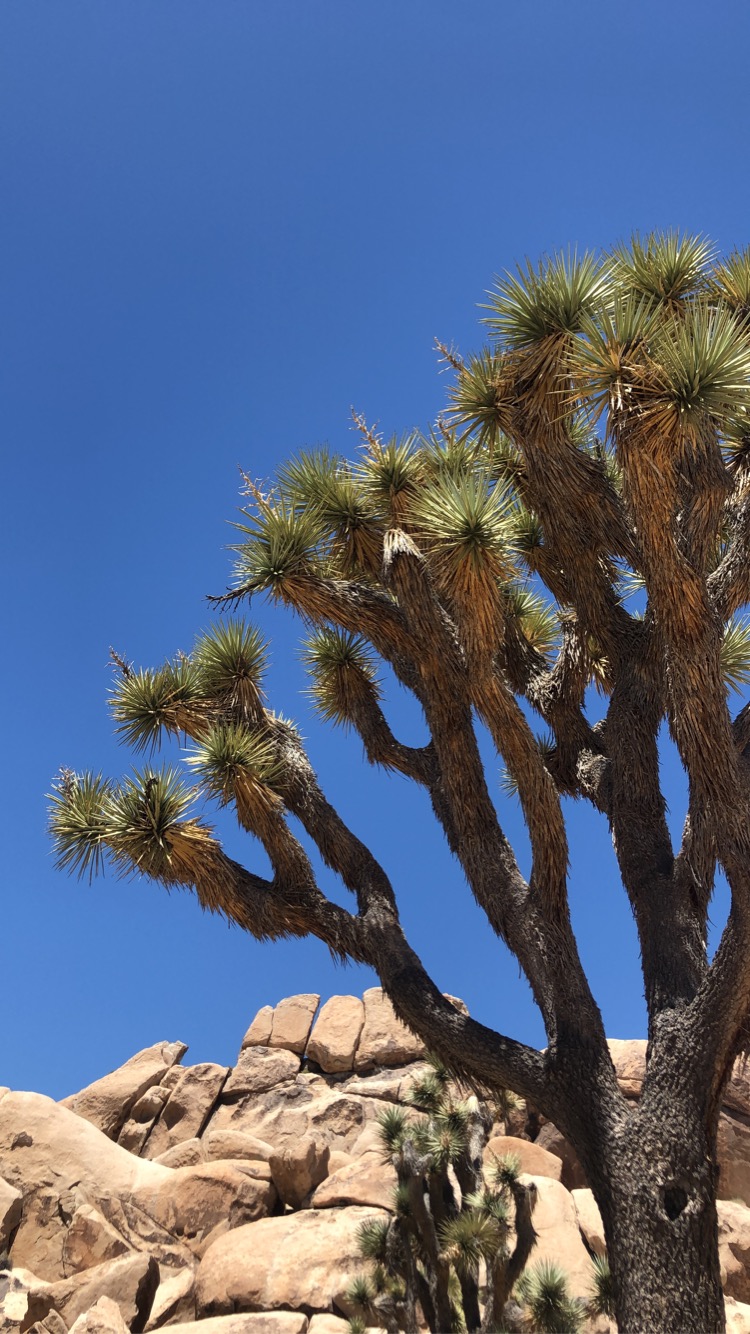
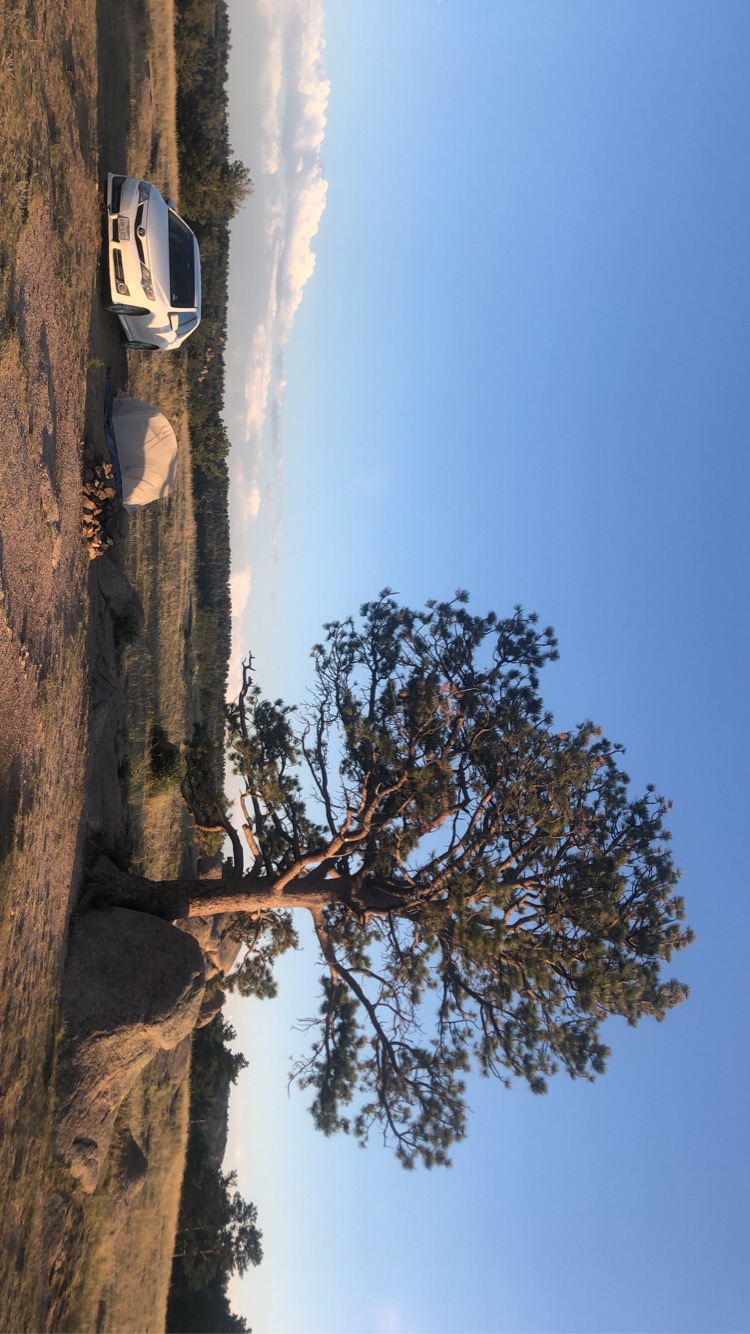
Before I set out, I made sure to prepare by getting everything I thought I would need to properly live out of my car. From camping gear, to clothes, food, and some things to keep me sane, the following items are what I ended up taking.
Considering I had never done any serious camping before, (only backyard sleepovers and festival camping) I had a lot to learn about what was actually important to take. I imagined myself mostly camping by my car, but I also wanted the option to do some overnight backpacking trips along the way. This is the gear I ended up with for the trip. I tried to shop for sales, so I'll put the current price and what I paid. There were also many things I already owned, so I'll list those as well in separate tables.
| Item | Description | Cost | I Paid |
|---|---|---|---|
| Sleeping Pad | Big Agnes. Inflatable sleeping pad for camping. Size - Regular | N/A | $80 |
| Tent | Big Agnes. One person tent. Lightweight at roughly 3 lbs | $280 | $229 |
| Trowel | Dig holes for your poop! | $5.50 | $5.50 |
| Tarp | Place underneath the tent to protect against punctures from sharp objects. 8ft. x 6 ft. | $5 | $5 |
| Camping Stove | JetBoil. Lightweight and compact! | $150 | $150 |
| Spork | Lightweight titanium spork | $9.95 | $7.89 |
| Soap | Dr. Bronner's 18 in 1 Lavender Hemp Pure Casile Soap. Biodegradable, used for everything! | $10 | $14 |
| Day Trip Backpack | Camelbak Rim Runner 22. 2.5 Liter Reservoir | N/A | $100 |
| Portable Charger | When your phone needs some juice, his is what you use. 4-5 full charges. | $33.99 | $33.99 |
| Bear Spray | If a bear is trying to kill you, this is what you use to stand a chance. | $54.95 | $54.95 |
| Total | $829.39 | $780.33 |
| Item | Description | Cost |
|---|---|---|
| Yeti Cooler | Tundra 45 | $299 |
| Travel Backpack | Osprey Porter 46. Big fan of this backpack/suitcase | $140 |
| Water Filter | Sawyer Mini Water Filter | $21.95 |
| Pillow | Incredibly important invention for comfortable sleep, especially when camping. | $17.99 |
| Travel Knife | Vital for spreading cream cheese on a bagel | $9.95 |
| Plate and Bowl | Cheap plate and bowl | $2 |
| Sleeping Bag (B) | No Limits 32. Lightweight sleeping bag rated to 32 degrees Fahrenheit | N/A |
| Backpacking Backpack (B) | Lightweight 50L backpack for backpacking | N/A |
| Lightweight Blanket (B) | Blanket for even more warmth inside the sleeping bag. Incredibly useful on those 34 degree nights. | N/A |
| Lightweight Pillow (B) | Pillow for backpacking, does NOT compare to a normal pillow | N/A |
| Mallet (B) | Hammer your stakes into the ground for your tent! | N/A |
| Mosquito Net (B) | Keep those bugs away and stay sane | N/A |
| Compass (B) | Know your orientation | N/A |
| Total | $500.89 |
| Item | Description |
|---|---|
| Wood Saw | Cut some branches or fallen trees for firewood. Alternatively buy firewood. |
| Compression Bags for Clothes | Store your clothes more efficiently. Gain more space, an extremely valuable resource when travelling out of your car. |
| Headlamp | Hands free flashlight for those early morning hikes. I used my phone flashlight, but a headlamp would be a great replacement. |
| Hiking Poles | Keep your body position in check. Helps with better posture, and takes the weight off of your knees especially when hiking downhill. |
| Sun Reflectors for Car | Help prevent the sun from turning your car into an oven during the day. I really wish I had these when I was in the desert and the water in the front seat was hot by the end of the day. |
| Water Purification Tablets | An alternative to the water filter. These would be good for purifying the 2.5L in the camelbak, which would save time/effort of squeezing out the filter bag 10+ times. |
I wanted to be able to go two weeks without washing clothes, so I decided to pack enough for a “normal” week's worth and wear everything for at least two days. I wanted to get actual hiking shorts and pants instead of only having athletic shorts and jeans, and I also wanted tough, waterproof hiking shoes, and a rain jacket for those wet Pacific Northwest hikes. I bought the beanie in Washington when I was tired of being freezing cold every night up north.
Laundry List
| Item | Description | Cost | I Paid |
|---|---|---|---|
| Hiking Shoes | Merrell Moab 2 Waterproof Hiking Shoes - Men's | $125 | $99 |
| Hiking Shorts | prAna Stretch Zion Shorts - Men's | $69 | $52 |
| Hiking Pants | prAna Stretch Zion Pants - Men's | $89 | $64 |
| Rain Jacket | REI Co-op Talusphere Rain Jacket - Men's | $49 | $67 |
| Beanie | JetBoil. Lightweight and compact! | $17.95 | $14 |
| Total | $349.95 | $296 |
| Item | Description |
|---|---|
| Sock Silk Liners | Blister no more! |
| Wool Socks | I've only heard and seen good things about wool socks, but haven't bought any yet. |
| Headlamp | Hands free flashlight for those early morning hikes. I used my phone flashlight, but a headlamp would be a great replacement. |
| Neck Gaiter | Keep your face and neck warm. Would be great on those cold morning hikes and windy days. |
| Long Johns | Insulate the legs. Not super important over the summer, but I can imagine them being useful in the other seasons. |
| Snow Gloves | On the occasional snowy hikes, these would have been useful for preventing ice burn and numb fingers. Solid investment. |
This section is for all the food I ate on the trip other than eating out at restaurants. I wanted to eat as barebones as possible in order to save money and see what it would be like to eat the kind of food oftenly used for backpacking. I learned to love all of this food, and didn't feel guilty for eating some of the unhealthier things because I was hiking so much I just needed calories. Normally, I would eat breakfast, snack until lunch, eat lunch, snack until dinner, and then eat dinner. Some days, like after a big hike, I would double up on breakfast and dinner. For example, I would eat oatmeal and a bagel and cream cheese for breakfast, and then for dinner I would do double ramen and double egg. Also I'm allergic to nuts, so trail mix, peanut butter, and other nutty food would be fantastic for a road trip but they're not listed here.
Breakfast
Lunch
Dinner
Snacks
Cooking, Storing, and Water
Having the Yeti with 16-20 pounds of ice, my food would stay cold for 4-7 days depending on the temperature of the location. For example, in the week I went from Colorado to the Tetons to Idaho (mild days and cold nights) it lasted a week, but when I was in southern California and Arizona (hot hot days and hot nights), it lasted about 4 days.
For cooking, I used the Jetboil. It's great for cooking for one, but can also cook for two if you're careful about spilling. I believe they also sell larger sized attachments for it. More often than not, there wouldn't be any picnic tables nearby, so I would cook in the front seat of my car, passenger side for space. The Jetboil is really easy to clean, a few drops of Dr. Bronners with water and a sponge does the job.
These are the things I brought for entertainment on the trip. Almost all of these were gifts I've received over the years, so I'm not sure how much they were. I did buy the hackysack ($5) and the ukulele ($30). Thank you Allyson for the ukulele.
The Goods
I tried to keep the ol' camry as organized as possible throughout the trip. I used several boxes and plastic bins to group together things by function, which helped a lot when I needed to find something quickly. Some things didn't have any container, so I would stuff them where I could, trying to at least group alike items nearby like all my shoes and all my coats. Please disregard the large red antique milk jug in the backseat.
Electronics Box
Fun Box
Camping Box
Kitchen Box
Cooking Bin
Hygiene/Medicine Box
Sunscreen Bag
Yeti Cooler
Day Trip Backpack
Shoe Corner
Coat Corner
Slackline Bag
Plastic Bags Bag
Misc Items
Dirty Clothes
Clean Clothes
Snack Box
Gallons of Water
I got the goods, but how did I actually end up living day-to-day? A tent's no good if you don't have a campsite to set it up! Here are some of the key things I had to keep in mind daily to live comfortably. One thing I didn't mention is that if you do end up camping multiple days in a row, there will probably come a time when you're going to have to dig a hole and release your bowels into the earth and that is okay.
Shoutout to freecampsites.net (not sponsored). This is and was my go-to site for finding free campsites in the U.S. Many of the sites are reviewed, and some have comments updating the status of the site. For example, because of the coronavirus, some of the campsites were closed, and some places closed for other reasons years ago. It usually lets you know if four wheel drive is required, and it also lists some campsites that require a fee but are cheap. Camping along national forest roads is free unless it's stated otherwise. Some national forests have signs posted along the road saying no camping, and all of the official national forest campsites require a fee. I found several campsites just by driving until I found a pull-off with a fire ring off the side of the road. When I found myself in a city, I would find some street that didn't have no-parking signs or signs indicating I would be towed, and I would sleep in my car.
First, I would lay down the tarp, then set up the tent over it. Not always necessary, but in some of the drier, rockier areas I camped it likely saved my tent from a small hole or two. In the tent I would have my sleeping pad, sleeping bag, blanket and pillow for sleeping, and usually I'd have warm clothes in there too in case it got cold at night. If I was in bear territory I would have my bear spray holstered in one of the tent's pockets, and irregardless I would always have my phone and keys with me as well.
This was one of the things that was on my mind the most. Where can I fill up gallon jugs of water for free? I tried walking into a gas station and going to the fountain drinks to get water there, but I felt weird not paying for anything, so I looked for other options. Most national parks have water filling stations that are better than drinking fountains for filling gallon jugs, so that ended up being the most common source for water. Some national forest recreational areas have water filling stations as well, and rest stops and city parks are a good resource for water fountains that may or may not be good for filling those big ol' jugs. I would also refill water when I stayed with friends and family! At the start of the trip I only had two gallon jugs plus the 2.5 L in my camelbak, but later on I ended up getting three more gallons, which would last me about 4 days (a little more than one gallon a day depending on how much I hiked and if I cooked once or twice).
I tried out different options for where to cook. Most campsites were just a lot of dirt, not always flat, so if I cooked on the ground, I would lay down the outdoor blanket and set everything on top of that. This worked out fine, but sitting on the ground isn't always the most comfortable, especially after a long day of hiking, and the blanket would get pretty dirty. The other method I tried was setting up everything on top of the closed trunk. This would work out fine, until I realized I forgot something I needed in the trunk and had to set everything on the ground, get what I needed, and move it all back. I ended up cooking in the following way. I would sit in the front passenger seat and set up the jetboil on the center console, and I would have other things I needed at my feet. This worked out well, and I would crack a window or have the doors opened for airflow while I cooked. This way, I was in a comfortable seat, and when I inevitably forgot something in the trunk, I could easily get up and go get it.
There's nothing like washing off in an icy rushing river. I only took showers when with friends and family, so when I was without the comforts of civilization I would take advantage of the cold, clean flowing water of rivers. I used Dr. Bronner's soap, which is biodegradable, and I would use my shammy towel to scrub and soak up water so I didn't have to have my full body in the water. Some of the rivers were so cold my feet would go numb and it was only bearable when the sun was shining, providing extra warmth. When I was in a private area, I would get in my birthday suit like the filthy animal I was, and when I was around people I'd go in my speedo.
When I wasn't staying with friends or family, I would go to a laundromat in a city. My clothes lasted about two weeks, and washing clothes usually cost about $6. Waiting for laundry gave me time to plan my next move or get some reading/journaling done!
The hottest place I camped was at the south entrance of Joshua Tree National Park. During the day it got to around 112 degrees Fahrenheit. The temperature would stay in the upper 90s until about midnight, and would fall to the upper 80s and low 90s just before sunrise. I slept in my underwear without the rain tarp on my tent to get the most breeze possible. There's really not much you can do other than be hot, sweaty, and sticky all night long. It's hard to get good sleep.
The coldest place I camped was near Twin Lakes, CO in the mountains. During the day it was a wonderful mid to upper 80s, but in the deep of night it got down into the low 30s. Despite the sleeping bag being rated to 32 degrees Fahrenheit, I was so cold at night that I couldn't sleep. Later on I learned how to deal with the cold better. I would put on socks, pajama pants, long sleeve under armour, T-shirt, sweatshirt, and beanie. This outfit in the sleeping bag would be comfortable down to the mid 40s, but what saved me several nights was wrapping myself in a blanket inside the sleeping bag to insule myself more. I would also throw on my down jacket as well when it was cold enough. With this setup, I slept pretty comfortably, but my face and neck would still be cold, so that's why I think getting a neck gaiter would be a good investment.
Disclaimer: This is what I did to avoid bears, but may not always result in staying clear of bears.
Do your own research on what to do when in bear country.
Going into the trip, I had no idea what the
proper procedure looked like for avoiding bears while hiking and camping. Along the way I was told
to store all food in a bear proof container or put everything in the trunk of the car. Then I learned
that bears are also attracted to things with strong odors in general like soap, toothpaste, and
sunscreen, which made camping a bit more of an ordeal. And then I learned that they can smell
water, so you shouldn't even have water outside the car or with you in your tent. I accepted
this as the cost of visiting wild country, and putting everything in the trunk of my car resulted
in no bears coming in the night to rip off my car doors to get inside. Another important piece of
advice is to make sure your hands are clean of food when going to bed, and to carry bear spray
in case things go wrong. Later on in the trip I ended up leaving food in the backseat of my car,
and still no bears ever showed up to my campsites. It was also suggested to have the car parked
far away from the tent, but several nights I camped right next to my car and thankfully no bears
arrived. May luck be on your side.
When hiking, generally what I saw posted at trailheads is to make noise throughout the hike to alert them
of your presence (bad things happen when they are surprised), carry bear spray, and avoid hiking alone
(Ha!). If you encounter a black bear at close distance, wave your arms slowly to appear large, slowly
back away facing the bear (do not run), and avoid making eye contact. If you encounter a grizzly bear
at close distance, hope that it doesn't decide to murder you.
With all that figured out, here's some lists of where I camped and hiked. Outside the week I stayed with family, all I really did was go on hikes, and I really only scratched the surface of what's out there to explore. A typical day would be to pack up everything I had at the campsite, head out to the next destination, pack a lunch, and hit the trail. After that I might drive around to explore, find my next campsite, have a nice dinner and journal, stretch, read, or play some music!
All the hikes I did that were long enough to be noteworthy or short but on established trails. I used Alltrails to save all the hikes, and I have each trail listed with its Alltrails link. The distances I put down were the approximate distance I hiked, but don't always match the distance on Alltrails. Some hikes are actually longer than stated on the website/app, and some hikes I did were a combination of two hikes. I went off of other users' reported distances or the actual distances marked at the trailhead.
These are all the free campsites I stayed at. I made it to all of these campsites in my Toyota Camry (low clearance two-wheel drive). Some roads were difficult to traverse, and some I wouldn't go on again. None of the campsites were bad, but some were definitely better than others. If a site doesn't have a star, it didn't make my top 10 favorites, but it's still a good spot. Some places were beautiful, but had horrible mosquitoes. Some sites I didn't end up at would have been better, but all the good campsites were taken when I stayed there.
| Trail Name | Location | Distance (miles) | Elevation Gain (ft.) |
|---|---|---|---|
| Mount Tallac 🌟 | Lake Tahoe, CA | 9.2 | 3274 |
| El Capitan via Yosemite Falls 🌟 | Yosemite National Park, CA | 16+ | 4681 |
| Ryan Mountain | Joshua Tree National Park, CA | 3.0 | 1069 |
| Mount Oxford 🌟 | Leadville, CO | 12.5 | 5734 |
| Mount Massive | Leadville, CO | 14.0 | 4553 |
| Mount Quandry | Breckenridge, CO | 7.5 | 3339 |
| Azure Lake and Inkwell Lake Loop | Rock Mountain National Park, CO | 11.1 | 3211 |
| North Crater Trail | Craters of the Moon, ID | 4.0 | 739 |
| Bald Mountain 🌟 | Ketchum, ID | 11.0 | 3412 |
| Snyder Lake Trail | Glacier National Park, MT | 8.8 | 2050 |
| Alkali Flat Trail | White Sands, NM | 5.0 | 100+ |
| Middle Fork Hot Springs Trail | Gila National Forest, NM | 1.4 | 95 |
| Hunter Creek Trail | Reno, NV | 6.4 | 1240 |
| Cool Creek Trail to Devil's Peak | Portland, OR | 6.6 | 3211 |
| Tamolitch Blue Pool 🌟 | Willamette National Forest, ORG | 3.7 | 305 |
| Discovery Point Trail | Crater Lake National Park, OR | 6.5 | 1000+ |
| Mount Leconte 🌟 | Great Smoky Mountains National Park, TN | 11.0 | 2929 |
| Guadalupe Peak 🌟 | Guadalupe Mountains National Park, TX | 8.8 | 2867 |
| Mill Creek Trail | Moab, UT | 4.5 | 185 |
| Devil's Garden Primitive Loop Trail 🌟 | Arches National Park, UT | 7.8 | 1131 |
| Aztec Butte Trail | Canyonlands National Park, UT | 1.7 | 262 |
| Mount Timpanogos 🌟 | Uinta-Wasatche-Cache National Forest, UT | 15.0 | 4425 |
| Snowgrass Flats and Goat Lake Loop Trail ⚠️ | Gifford Pinchot National Forest, WA | 5.0 | 1200 |
| Cape Alava Trail | Olympic National Park, WA | 6.9 | 580 |
| Phelps Lake Overlook | Grand Teton National Park, WY | 2.0 | 413 |
| Delta Lake via Amphitheatre Lake Trail 🌟 | Grand Teton National Park, WY | 12.4 | 3400 |
| Total | 201.8 | 55,405 |
I broke my trip into 5 different sections to analyze cost. I did this because my cost of living differed based on where I was and who I was with. For example when I stayed with my family in Nevada for a week, the only expenses I had were gas and an oil change, which doesn't represent the normal cost of living when I'm alone in my car. The total cost can be interpreted in different ways because some things I didn't have to pay for, which if I did, would have made the trip all around more expensive. There's also things I included that weren't necessary to functioning, but I bought because I wanted to (like stickers and legal marijuana). I definitely could have just combined the cost of ice with groceries, but I didn't and I'm sticking with that decision even now. Driving over 15,000 miles made gas the most expensive part of the trip. My car gets around 32 miles per gallon, and gas was extremely cheap because of coronavirus. Most of the gas was around $2.29 - $2.79, with some places having it fall under $2.00 a gallon. Even in California I was able to fill up for under $3.00 a gallon. With that in mind, here's the cost breakdown.
| Gas | $770.64 |
| Groceries | $356.30 |
| Eating Out | $189.96 |
| Legal Marijuana | $151.07 |
| Car Maintenance | $119.38 |
| Gear (During Trip) | $73.31 |
| Gifts | $41.43 |
| Ice | $34.76 |
| Stickers | $31.06 |
| Other | $21.36 |
| Total | $1789.27 |
I think that even if I didn't stay with family along the way, or get a lot of groceries paid for up front, or a handful of other things along the way that helped me out along the way, I think the cost would still have fallen around $2000, which I think is pretty good for 73 days of travelling! My cost came out to be about $24.50 per day.
I started the trip after having gone to Costco with my mom, who treated me to quite a lot of bulk snacks, and things like tuna that lasted me a good amount of time. I stayed with my sister in Houston and my aunt in Galveston, who cooked for me when I was with them. This time also included a lot of eating out in Tennessee and the first oil change of my car, which added a lot to the cost.
| Gas | $269.70 (11) |
| Groceries | $54.93 |
| Eating Out | $125.83 (12) |
| Ice | $269.70 |
| Misc |
|
| Total | $559.48 |
For about two weeks I travelled with David, and he was kind enough to split the cost of gas while we were together. We also split groceries and other things like ice and bear spray. I lost my spork, so I had to replace it, and I also had to stock up on propane for the Jetboil. I forgot to write down the cost of the laundry, so I'll put in an estimate.
| Gas | $135.36 ($270.71) (10) |
| Groceries | $94.52 ($189.03) |
| Eating Out | $34.25 (2) |
| Ice | $5.19 ($10.38) (2) |
| Misc |
|
| Total | $362.44 |
My parents took me out to eat for three meals (We happened to be in Colorado at the same time). When I left the Silverthorne area, I was alone until I met my family in Nevada. I lost my giant, 90% full Dr. Bronner's bottle in Rocky Mountain National Park, so I had to replace it.
| Gas | $125.01 (5) |
| Groceries | $185.19 |
| Eating Out | $11.27 (2) |
| Ice | $5.22 (2) |
| Misc |
|
| Total | $356.53 |
When staying with my family they really took care of me. They cooked amazing meals every night, helped me wash my car, and I was able to wash my clothes! Thank you Wyatt for taking me to Costco!
| Gas | $27.65 (1) |
| Groceries | $0 |
| Eating Out | $0 |
| Ice | $0 |
| Misc |
|
| Total | $92.05 |
Mostly alone again for the last leg of the trip. Darrell took me out to a nice dinner before our hike at Lake Tahoe, and when I stayed with my uncle in Tucson, he took me out to eat several times, which I really appreciated. I went to the store right before staying in Nevada, and so I still had a lot of food when I left because they cooked so much for me, so I only had to go to the store one more time. I also tried to end the trip without any leftover food, so the last three days I did a lot of snacking instead of eating nice meals.
| Gas | $212.92 (9) |
| Groceries | $21.66 |
| Eating Out | $18.61 |
| Ice | $7.68 (3) |
| Misc |
|
| Total | $411.72 |